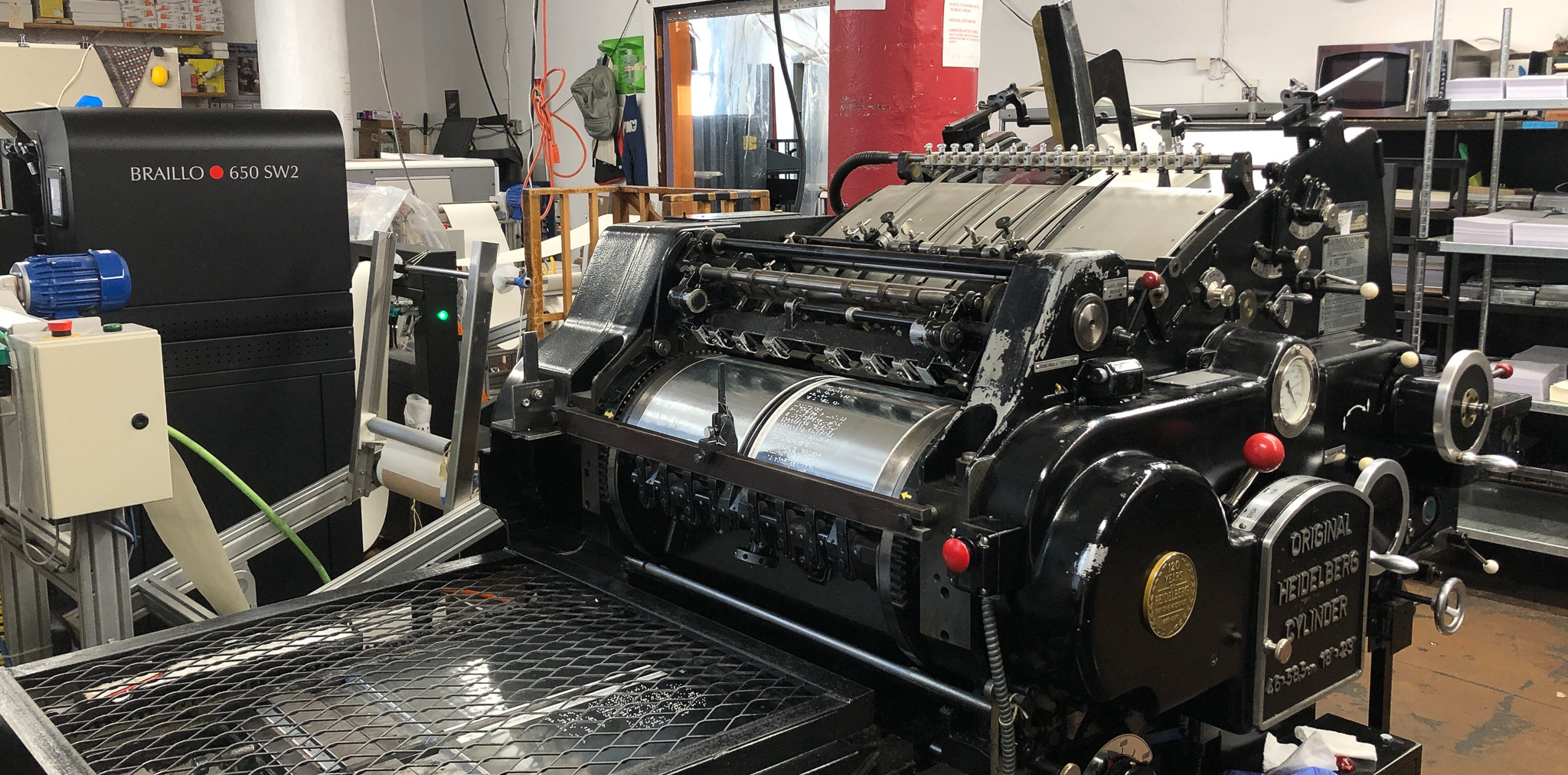

Our tour leader for the day was Joe Quintanilla, the Vice President of Development and Major Gifts (and, as we read later, a highly accomplished marathoner, Paralympic runner, and baseball player). Joe started us off with an introduction to the NBP’s history and mission, then took us through the facility as he explained how each part of the braille printing process worked, through transcription, proofreading, embossing, pressing, and finishing.

In one of the highlights of the tour, we walked into the printing room to come face-to-face with one magnificent printing press, standing proudly between a couple of other smaller presses. Joe described the machine, a modified Heidelberg braille printing press, as “the heartbeat of Braille”—when it’s running, every person in the building can feel its steady, intricate clank.
Joe called over the operator, a man who had worked at the NBP for 40 years and was, up to this point, deep in focus on another press. After setting up the Heidelberg, he turned it on, and it was noisy and exciting in the best possible way. Dials, meters, big red levers and little parts all moving emphatically in sync—what a sensory treat, to be jerked out of our staid little world of elegant chrome laptops and discreet background processes. (Braille seems a little like that, in general—a uniquely sensory experience.)
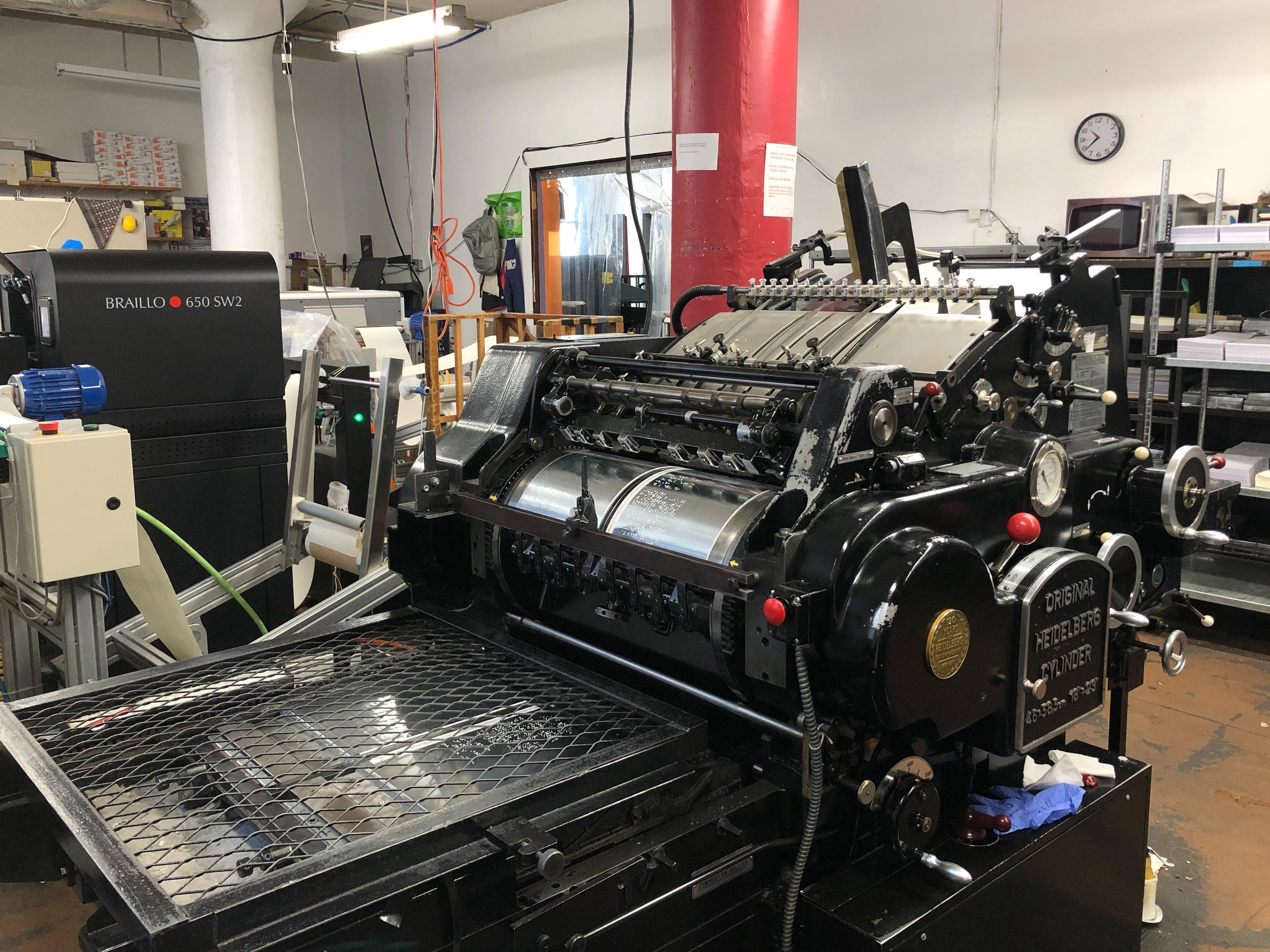
In the next room, we met Elizabeth, who spoke in equal parts sentences and jokes as she showed us how the braille pages printed from the Heidelberg would be laid out on a long table, up to eleven stacks in a row. Staff members or volunteers would collate the pages, “jog” them (making sure they were all aligned at each edge), then pass them along—anything placed beyond a particular pole was assumed to be ready for the stitcher, or, as she proceeded to show us, the ”fancy stapler”.
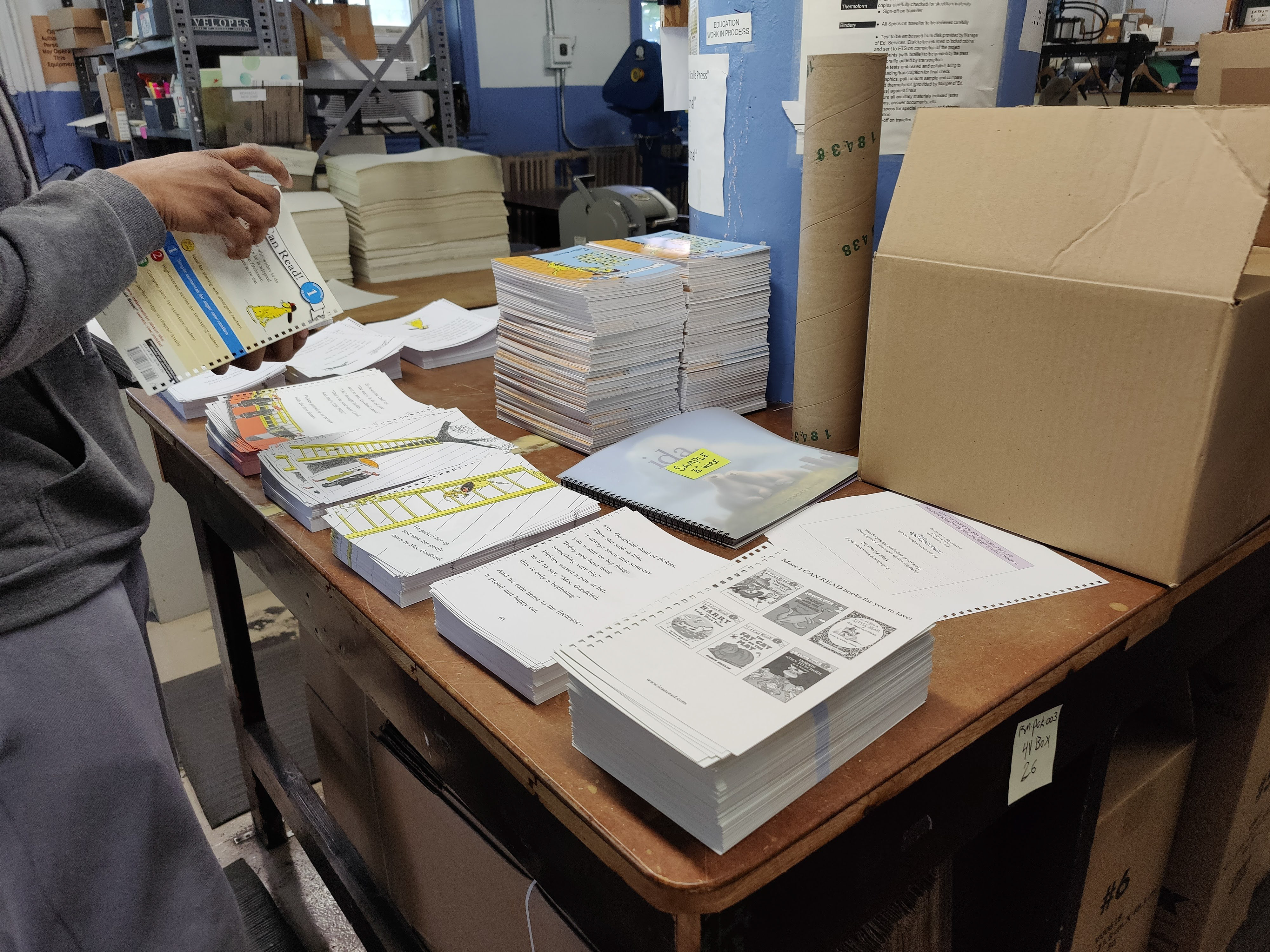
In addition to braille, the NBP also publishes tactile graphics. As a book of thermoform paper maps was passed around the table, we were able to feel for ourselves why the NBP is renowned for the accuracy and resolution of their publications.
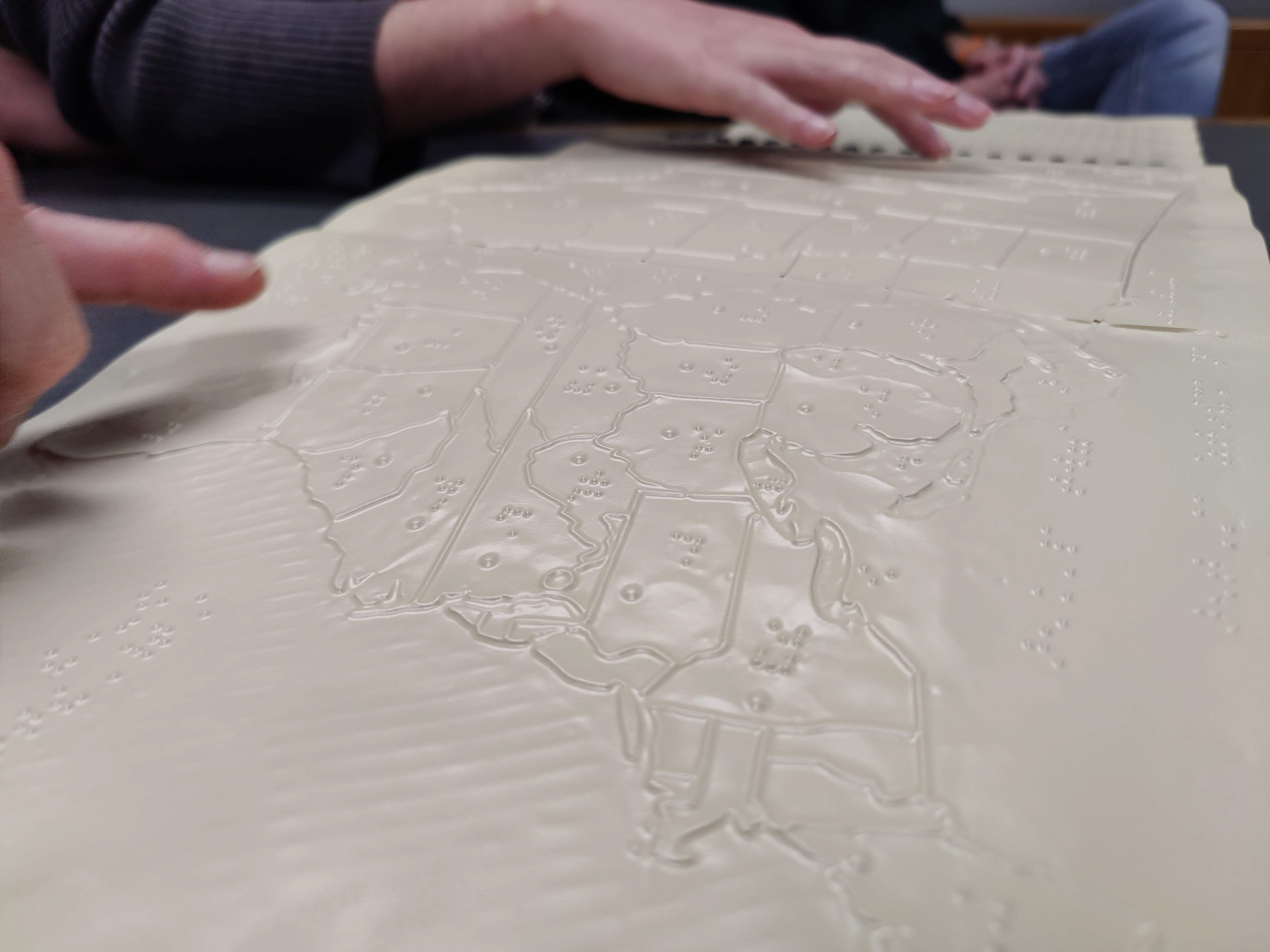
It was a joy to meet everyone at the facility and get an intimate look at the care and work they dedicate to publishing high-quality and accessible products for blind people and braille readers, not to mention their countless community organizing, outreach, and fundraising efforts.
It just so happened that the day we made the visit was Global Accessibility Awareness Day, the intention of which is to “get everyone talking, thinking and learning about digital access/inclusion and people with different disabilities”. As we made our trek back to the office, accessibility was certainly the word buzzing in the beautiful spring air.
More to come, as we continue to process everything we’ve learned!
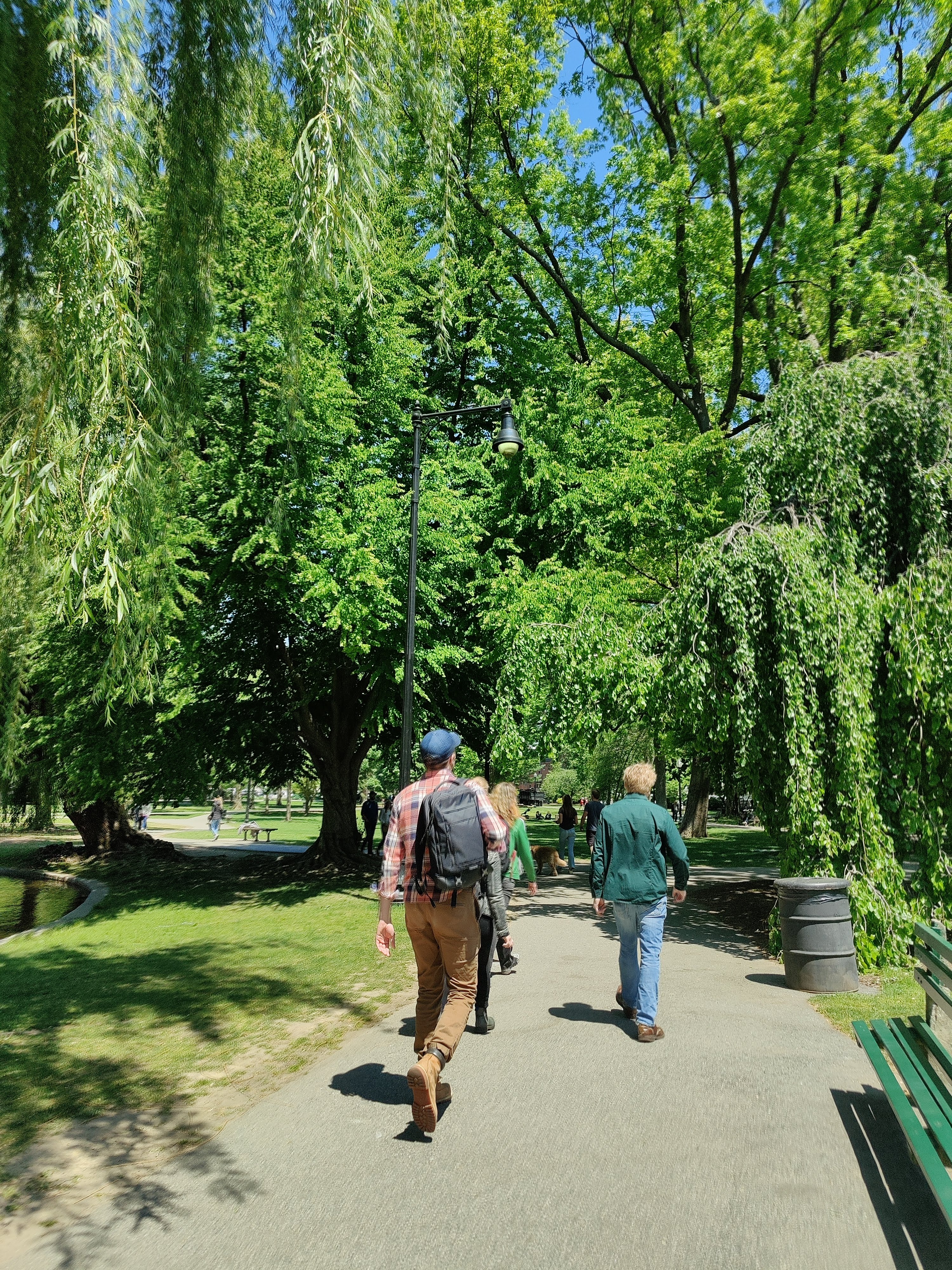
We’d love to hear what you’re working on, what you’re curious about, and what messy data problems we can help you solve. Drop us a line at hello@fathom.info, or you can subscribe to our newsletter for updates.